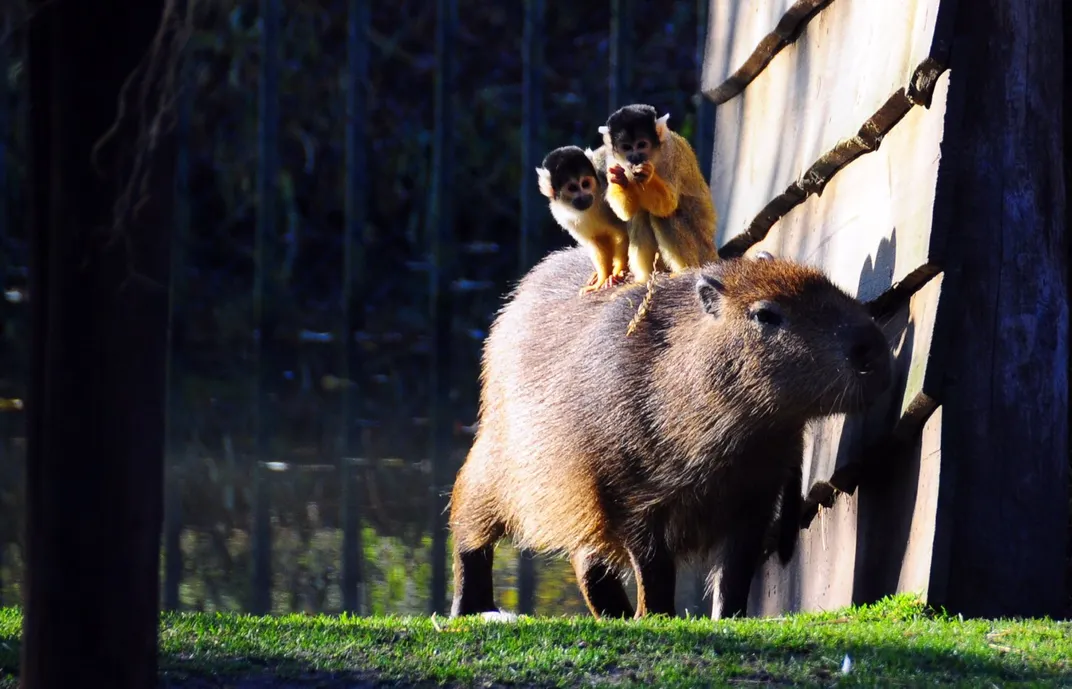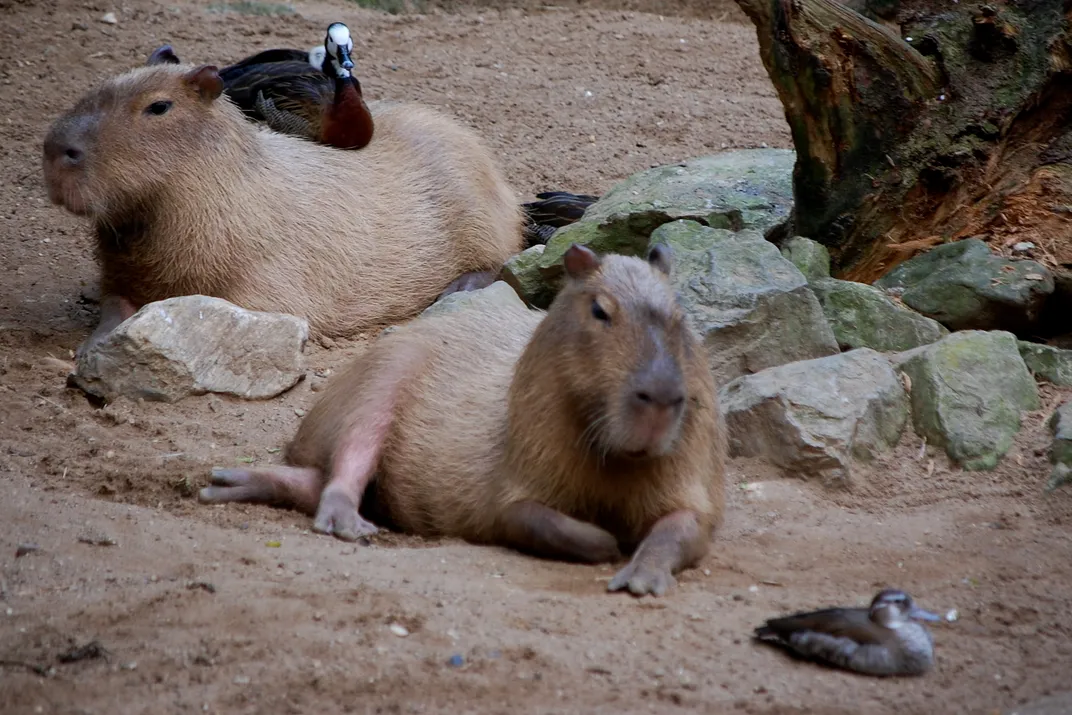Capybaras Are Basically Nature’s Chairs
The world’s largest rodent can’t get any respect
/https://tf-cmsv2-smithsonianmag-media.s3.amazonaws.com/filer/2e/73/2e738d22-a273-4a77-a76e-c5486b80c309/02_07_2014_capybara_monkey.jpg)
The photos in this post are just a few examples. To truly understand this phenomenon, you'll want the full experience.
Capybara, Hydrochaeris hydrochaeris, are the world's largest rodents. Native to the tropical forested stretches of South America, these giant rodents, says the BBC, can “weigh as much as a man.” They like to hang out around water, chew grass, and eat their own dung.

The Encyclopedia of Life says that capybaras are social creatures, hanging out in family packs with a couple dozen individuals. But capybaras' social habits extend far beyond family mingling. As documented by the very important site Animals Sitting on Capybaras, capybaras are something of a headrest for the rest of nature. Post after post, Animals Sitting on Capybaras captures the life of the living chair.

/https://tf-cmsv2-smithsonianmag-media.s3.amazonaws.com/accounts/headshot/smartnews-colin-schultz-240.jpg)
/https://tf-cmsv2-smithsonianmag-media.s3.amazonaws.com/accounts/headshot/smartnews-colin-schultz-240.jpg)